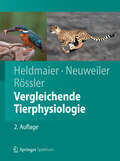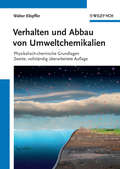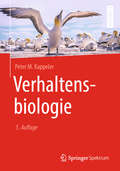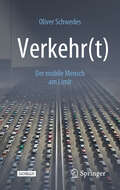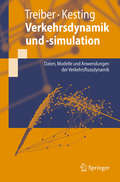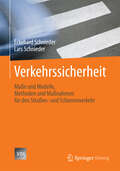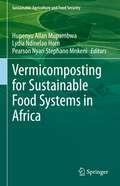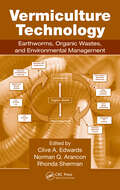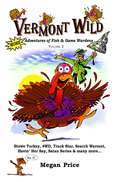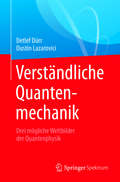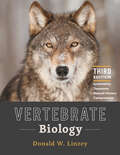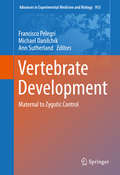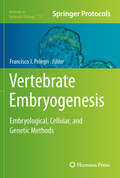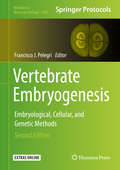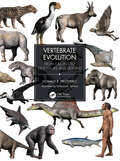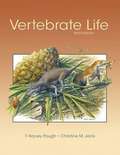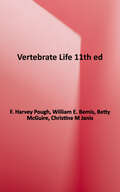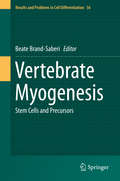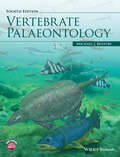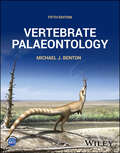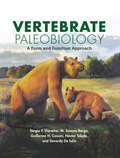- Table View
- List View
Verfahrenstechnische Methoden in der Wirkstoffherstellung
by Heinz G. KandelBei der Herstellung von pharmakologischen Wirkstoffen kommen eine Vielzahl verfahrenstechnischer Grundoperationen zur Anwendung. Dies sind beispielsweise Zentrifugation, Filtration und Ultrafiltration, Chromatographie und Gefriertrocknung. <P><P>Insbesondere zur Herstellung von Produkten aus Blutplasma gelten besondere Anforderungen wie Steril- und Reinraumtechnik und schonende Weiterverarbeitung. Das vorliegende Buch gibt einen praktischen Überblick über verfahrenstechnische Methoden und bewährte Lösungen in der pharmazeutischen Wirkstoffherstellung und beschreibt erstmals die Besonderheiten und verfahrenstechnischen Modifikationen in der Blutplasma-Industrie. Neben Hilfestellungen, Tipps und Tricks für Ingenieure, Praktiker und Berufseinsteiger beinhaltet das Buch bislang unveröffentlichte Stoffwerte von Blutplasma und Blutproteinen. Die beiliegende CD-ROM enthält 30 praxisorientierte Berechnungsprogramme, mit deren Hilfe der Leser sehr schnell zu Lösungen eigener Fragestellungen kommen kann.
Vergleichende Tierphysiologie (Springer-Lehrbuch)
by Gerhard Heldmaier Gerhard Neuweiler Wolfgang RösslerWanderung durchs TierreichDie vegetative Physiologie beschäftigt sich mit den Grundbausteinen des Lebens: Atmung, Kreislauf, Ernährung, Energiehaushalt, Stoffwechsel, Osmoregulation. Wie funktionieren sie unter alltäglichen, wie unter extremen Bedingungen? Vergleichende Beispiele aus verschiedenen Tiergruppen geben einen Einblick in die Evolution von Lebensvorgängen, ihre Leistungsgrenzen und Anpassung an unterschiedliche Lebensräume. Die Neuro- und Sinnesphysiologie widmet sich den Themen Sehen, Hören, Riechen, Schmecken, Fühlen. Zu jedem Gebiet bietet das Buch markante Beispiele für die spezielle Anpassung der Sinnes- und Neuroleistung an bestimmte Biotope und Verhaltensweisen. Von den Quallen bis zu den Primaten wird die evolutive Entwicklung der Nerven- und Sinnessysteme sowie deren Funktionen verfolgt.Die Neuauflage wurde gestrafft und vereinigt die beiden Teilbände jetzt in einem Band. Kommen Sie mit auf eine spannende Reise.
Verhalten und Abbau von Umweltchemikalien: Physikalisch-chemische Grundlagen
by Walter KlöpfferUm die Gefahrdung der Umwelt durch Chemikalien einschatzen zu konnen, reicht es nicht aus, nur die Schadwirkung, d. h. den Einfluss der Chemikalie auf die Umwelt zu betrachten. Auch der Einfluss der Umwelt auf die Chemikalie spielt eine wichtige Rolle, uber deren Verteilung, Verbreitung und Abbau in den verschiedenen Umweltkompartimenten. Seit etwa 30 Jahren existieren immer wieder verbesserte Modelle, die diese Umweltfaktoren abbilden und eine Vorhersage zu Dauer und Intensitat der Umweltgefahrdung nach Freisetzung eines Schadstoffes ermoglichen. Mit Hilfe dieser Einfuhrung in die Grundlagen des Verhaltens von Chemikalien in der Umwelt wird der Leser in die Lage versetzt, die verfugbaren Rechenmodelle und Simulationen zum Abbau von Chemikalien in Luft, Wasser und Boden sinnvoll einzusetzen und deren Ergebnisse fachgerecht zu interpretieren. Das Buch besteht aus vier Teilen. Der erste Teil dient als Einleitung in die Thematik, der zweite befasst sich mit der Verbreitung und Verteilung von Chemikalien in Luft, Wasser und Boden. Im dritten Teil wird der abiotische und biotische Abbau der Chemikalien betrachtet. Im vierten Teil schlie?lich werden die verschiedenen Verteilungs- und Abbauwege zu einfachen bis komplexen Rechenmodellen zusammengefugt, und die wichtigsten, von nationalen und internationalen Organisationen verwendeten Modelle werden eingehend anhand von Beispielen erlautert.
Verhaltensbiologie (Springer-lehrbuch Ser.)
by Peter M. KappelerFressen und Nicht-gefressen-Werden, Paarungspartner finden und Junge erfolgreich aufziehen – diese grundlegenden Prinzipien der Verhaltensbiologie werden in dem Lehrbuch übersichtlich und anhand aktueller Beispiele dargestellt. Neben dem Thema Verhaltensbiologie als integrative Disziplin liegt der inhaltliche Schwerpunkt bei Fragen der Evolution des Verhaltens, der Anpassung, der Verhaltensökologie, Soziobiologie und Evolutionsbiologie. Die Neuauflage wurde um einige eindrucksvolle Fotos ergänzt, das Kapitel zum Sozialverhalten erweitert.
Verhaltenssteuerung, Recht und Privatautonomie
by Clemens LatzelDieses Buch überträgt psychologische und verhaltensökonomische Erkenntnisse über die menschliche Entscheidungsfindung und ihre Steuerbarkeit (vor allem durch Anreize, Überzeugung und äußere Umstände, also Nudging) in die Rechtswissenschaft und zeigt, wie das Recht mit diesem Wissen optimiert werden kann. Während der Homo oeconomicus als Standardmodell der Wirtschaftswissenschaften bereits durch einen empirisch fundierten Modellpluralismus abgelöst wurde, harrt das zivilrechtliche Selbstbestimmungsdogma noch einer empirischen Erdung. Außerdem erklärt dieses Buch – insoweit auch für die Sozialwissenschaften interessant – die Funktionsweisen des Rechts und seiner spezifischen Steuerungsinstrumente und zeigt deren Rahmenbedingungen auf. Aus traditioneller zivilrechtlicher Sicht ist hierbei zu rechtfertigen, warum Recht überhaupt das Verhalten von Menschen steuern darf und ausgerechnet die Privatautonomie als Hort des Liberalismus ihre Indienstnahme für politische Zwecke (Materialisierung) ertragen muss.
Verkehr(t): Der mobile Mensch am Limit
by Oliver SchwedesVerkehr prägt unsere Lebensweise in modernen Gesellschaften. Gleichzeitig trägt er aber auch in wachsendem Maße dazu bei, die Lebensqualität aller Menschen zu beeinträchtigen und ihre Lebensgrundlagen im globalen Maßstab zu zerstören. Oliver Schwedes widmet sich in diesem Sachbuch der Bedeutung des Verkehrs in der Menschheitsgeschichte. Er betrachtet den Verkehr in seiner Janusköpfigkeit und zeigt, wie er den menschlichen Fortschritt lange befördert hat, bevor er sich zunehmend in sein Gegenteil verkehrte. Das Buch ist ein Plädoyer für eine mutige Verkehrspolitik, die mit dem kapitalistischen Paradigma ‚höher-schneller-weiter‘ bricht.
Verkehrsdynamik und -simulation
by Martin Treiber Arne KestingDas Lehrbuch liefert eine umfassende Darstellung der Modellierung und Dynamik des Straßenverkehrs. Es erschließt Studierenden ein Gebiet, das bisher nur in der englischsprachigen Originalliteratur dargestellt wurde. Aktuelle Anwendungen in Bereichen wie Verkehrsmanagement, Fahrer-Assistenzsysteme oder Verkehrstelematik stellen den Praxisbezug her, zahlreiche Abbildungen und Übungsaufgaben vertiefen das Verständnis. Das Buch richtet sich an Physik- und Verkehrsingenieurstudenten sowie Studierende der Informatik, Mathematik und technischer Richtungen.
Verkehrssicherheit
by Eckehard Schnieder Lars SchniederDer Band liefert erstmals eine methodische Darstellung zur Verkehrssicherheit in einem begriffs- und systemtheoretischen Ansatz, der sozial- wie technikwissenschaftliche Perspektiven integriert. Vorgestellt werden Methoden für die Erforschung und Gestaltung von Verkehrssystemen hinsichtlich der Verkehrssicherheit. Ausgehend von der begrifflichen Analyse stellt der Band Ansätze zur Definition von Verkehrssicherheit vor, erklärt anhand dieser Modelle die historische Entwicklung und leitet Prognosen für die weitere Entwicklung der Verkehrssicherung ab.
Vermicomposting for Sustainable Food Systems in Africa (Sustainability Sciences in Asia and Africa)
by Hupenyu Allan Mupambwa Lydia Ndinelao Horn Pearson Nyari Stephano MnkeniThis edited book collates the research done mainly in Africa on vermicomposting and related technologies that can assist African smallholder farmers in making nutrient rich organic fertilizers from their animal and crop residue wastes. Information on the development of organic sources of liquid fertilizer development for hydroponics is also presented. The book presents research findings on vermicomposting in a simplified way that will allow farmers and extension workers to adopt the indicated technologies. The book also covers critical aspects of standardization of vermicompost preparation, earthworm biology, nutrient enrichment of composts and organic liquid fertilizer production.Vermicomposting is a technology that employs earthworms to enhance the biodegradation and fertilizer value of organic wastes. The earthworms optimize the biodegradation ecosystem during composting, resulting in a final nutrient rich product with more recalcitrant forms of carbon and much lower levels of veterinary antibiotics and their metabolites. Vermicompost as an organic fertilizer is highly preferred over other forms of soil enhancers. A lot of research has been done on vermicompost and related activities in Africa but remain scattered across various publications.The book is an invaluable source of information for farmers especially those practicing organic crop production, vermicomposting researchers, as well as extension workers.
Vermiculture Technology: Earthworms, Organic Wastes, and Environmental Management
by Rhonda Sherman Clive A. Edwards Norman Q. AranconCo-edited by international earthworm expert Clive A. Edwards, Vermiculture Technology: Earthworms, Organic Wastes, and Environmental Management is the first international, comprehensive, and definitive work on how earthworms and microorganisms interact to break down organic wastes on a commercial basis. Many books cover the importance of composting
Vermont Wild: More Adventures of Fish and Game Wardens (Volume #2)
by Megan PriceMore hilarious, true game warden adventures. Laugh along as the officers set up a sting, confront cunning poachers, try to train a wily deputy dog, conduct searches and wrestle uncooperative critters. Loved by all ages.
Verschränkte Systeme: Die Quantenphysik auf neuen Wegen
by Jürgen AudretschDieses einführende Lehrbuch für Studenten höherer Semester der Physik, Chemie und Informatik behandelt ein in jüngster Zeit dynamisch expandierendes Gebiet der Physik. Das Buch befasst sich u.a. mit den Themen Quanteninformationstheorie , Quantenkommunikation, Quantencomputing, Teleportation, verborgene Parameter, Welcher-Weg-Markierung, Quantenmessprozess, POVM, Quantenkanäle und vermittelt dadurch nicht nur ein vertieftes Verständnis der Quantentheorie, sondern auch ein Basiswissen, um die schnelle Entwicklung des Gebiets zu verfolgen, bzw. in ein Spezialgebiet der Forschung einsteigen zu können. Kommentierte Empfehlungen für weiterführende Literatur sowie Übungsaufgaben helfen dem Leser, rasch einen fundierten Zugang zu den theoretischen Grundlagen zukünftiger Schlüsseltechnologien zu finden. Das Buch kann zur Grundlage von Vorlesungen und Seminaren gemacht werden. Da die benötigten Grundkenntnisse in Mathematik und Quantentheorie in einleitenden Kapiteln dargestellt werden, eignet sich das Buch auch zum Selbststudium.
Verschüttete Wörter - Aphasie: verstehen und behandeln
by Holger Grötzbach Lena SpitzerDas Buch beschreibt die tägliche Praxis und unterstützt Therapeut*innen bei den Herausforderungen in der Behandlung einer Aphasie, u.a. durch das Eingehen auf Begleitstörungen von Aphasien wie Hemianopsie, Hemiplegie, Apraxie, Störungen der Exekutivfunktionen, Gedächtnis- und Aufmerksamkeitsstörungen. Praxisnah beschrieben und teils aus der Sicht des Patienten, wird der Umgang mit den Betroffenen erlernt und Therapeut*innen erhalten die notwendigen Grundlagen für die Behandlung der Patient*innen und für Angehörigengespräche
Verständliche Quantenmechanik: Drei mögliche Weltbilder der Quantenphysik
by Detlef Dürr Dustin LazaroviciDas vorliegende Buch richtet sich an Studierende der Physik, für die nach der Quantenmechanik-Vorlesung die wesentliche Frage offen geblieben ist: „Was sagt denn nun der mathematische Formalismus, den ich jetzt ausgiebig und ach so mühsam studiert habe, über die Natur aus?“. Bei der Suche nach der Antwort besprechen die Autoren unter anderem die modernen Quantentheorien, die von John Stuart Bell „Theorien ohne Beobachter“ genannt wurden: die Bohmsche Mechanik, die Kollaps-Theorie und die Viele-Welten-Theorie. Neben zielgerichteten mathematischen Aussagen, die in Kursvorlesungen selten vorkommen, erklärt das Buch anhand der neuen Theorien die Rolle der Wellenfunktion und des Zufalls in der Quantenmechanik. Insbesondere beschäftigen sich die Autoren auch mit der Gedankenwelt des Physikers John Stuart Bell, der mit den berühmten, aber leider oft missverstandenen Bellschen Ungleichungen unser physikalisches Weltbild nachhaltig verändert hat. Das Buch eignet sich damit begleitend oder ergänzend zu einer Kursvorlesung über Quantenmechanik oder aber auch zum Selbststudium.
Vertebrate Biology: Systematics, Taxonomy, Natural History, and Conservation
by Donald W. LinzeyThe most trusted and best-selling textbook on the diverse forms and fascinating lives of vertebrate animals.Covering crucial topics from morphology and behavior to ecology and zoogeography, Donald Linzey's popular textbook, Vertebrate Biology, has long been recognized as the most comprehensive and readable resource on vertebrates for students and educators. Thoroughly updated with the latest research, this new edition discusses taxa and topics such as• systematics and evolution• zoogeography, ecology, morphology, and reproduction• early chordates• fish, amphibians, reptiles (inclusive of birds), and mammals• population dynamics • movement and migration• behavior• study methods• extinction processes• conservation and managementFor the first time, 32 pages of color images bring these fascinating organisms to life. In addition, 5 entirely new chapters have been added to the book, which cover• restoration of endangered species• regulatory legislation affecting vertebrates• wildlife conservation in a modern world• climate change• contemporary wildlife managementComplete with review questions, updated references, appendixes, and a glossary of well over 300 terms, Vertebrate Biology is the ideal text for courses in zoology, vertebrate biology, vertebrate natural history, and general biology. Donald W. Linzey carefully builds theme upon theme, concept upon concept, as he walks students through a plethora of topics. Arranged logically to follow the most widely adopted course structure, this text will leave students with a full understanding of the unique structure, function, and living patterns of all vertebrates.
Vertebrate Development
by Francisco Pelegri Michael Danilchik Ann SutherlandThis book provides a comprehensive overview of topics describing the earliest steps of fertilization, from egg activation and fertilization to the activation of the zygotic genome, in various studied vertebrate model systems. The contribution of maternal and paternal factors and their role in the early embryo as parental DNA becomes modified and embryonic genes become activated is fundamental to the initiation of embryogenesis in all animal systems. It can be argued that this is a unique developmental period, when information from the parents is compressed to direct the development of the body plan of the entire organism, a process of astounding simplicity, elegance and beauty. In addition to their fundamental scientific interest, many frontiers of biomedicine, such as reproductive biology, stem cells and reprogramming, and the understanding of intergenerational diseases, depend on advances in our knowledge of these early processes. Vertebrate Development: Maternal to Zygotic Control brings together chapters from experts in various disciplines describing the latest advances related to this important developmental transition. Each chapter is a synthesis of knowledge relevant to all vertebrates, with details on specific systems as well as comparisons between the various studied vertebrate models. The editorial expertise encompasses the fields of major vertebrate model systems (mammalian, amphibian and teleost) ensuring a balanced approach to various topics. This unique book--with its combination of in-depth and up-to-date basic research, inter-species comprehensiveness and emphasis on the very early stages of animal development--is essential for research scientists studying vertebrate development, as well as being a valuable resource for college educators teaching advanced courses in developmental biology.
Vertebrate Embryogenesis
by Francisco J. PelegriOne of the striking findings of modern developmental biology has been the high degree of conservation of signaling and developmental mechanisms amongst different animal species. Such conservation allows information learned from a given organism to be applicable to other species, including humans, and has validated the use of a few model systems to deduce general biological principles. In spite of this underlying conservation, however, each species has unique characteristics arising from its evolutionary history. Vertebrate Embryogenesis: Embryological, Cellular and Genetic Methods attempts to address the increasingly important need of straddling species boundaries in the context of a single research program by compiling research protocols used in a wide range of vertebrate species. In fact, this volume has been designed so that readers can readily find information on species other than the one with which they may be most familiar. These protocols include not only embryological methods, but also cellular and genetic approaches that have complemented and expanded our understanding of embryonic development. In addition, a number of chapters highlight a specific method that is in principle applicable to multiple species, such as TILLING and ZFN-mediated mutagenesis, the generation of Embryonic Stem (ES) cell lines, and nuclear/oocyte transfer. Written in the highly successful Methods in Molecular BiologyTM series format, chapters contain introductions to their respective topics, lists of the necessary materials and reagents, step-by-step, readily reproducible laboratory protocols, and notes on troubleshooting and avoiding known pitfalls. Authoritative and accessible, Vertebrate Embryogenesis: Embryological, Cellular and Genetic Methods serves as an ideal guide to the molecular, cell, and developmental biology community and will hopefully contribute to the ongoing collective effort towards a better understanding of the beauty and logic of vertebrate development.
Vertebrate Embryogenesis: Embryological, Cellular, and Genetic Methods (Methods in Molecular Biology #1920)
by Francisco J. PelegriThis detailed volume explores animal embryogenesis in a way that aims to foster cross-model work and ideas by presenting methods that can be applied across laboratories and species boundaries. Improved protocols with updated advances in key traditional model systems are included, such as in amphibians, chicken, mouse, and zebrafish, as well as chapters on leopard gecko and the flexible-shelled slider turtle. Within these traditional model systems, new developments are presented, such as protocols for the analysis of cellular membranes and intracellular signals, light-controlled manipulation of function, and the analysis of transcriptomic and proteomic data in the context of the embryo. Written for the highly successful Methods in Molecular Biology series, chapters include introductions to their respective topics, lists of the necessary materials and reagents, step-by-step, readily reproducible laboratory protocols, and tips on troubleshooting and avoiding known pitfalls. Authoritative and fully updated, Vertebrate Embryogenesis: Embryological, Cellular, and Genetic Methods, Second Edition serves as an invaluable aid to scientists, educators, and the advanced general audience and will act as an inspiration to further our understanding and appreciation of animal development. Chapter 10, "Optogenetic Control of Subcellular Protein Location and Signalling in Vertebrate Embryos," is available open access under a Creative Commons Attribution 4.0 International License via link.springer.com.
Vertebrate Evolution: From Origins to Dinosaurs and Beyond
by Donald R. ProtheroThe first vertebrate animals appear in the fossil record over 520 million years ago. These lineages diversified and eventually crept ashore leading to further evolutionary divergence and the appearance of the familiar charismatic vertebrates of today. From the tiniest fishes, diminutive salamanders, and miniaturized lizards to gargantuan dinosaurs, enormous brontotheres, and immense whales, vertebrates have captured the imagination of the lay public as well as the most erudite academics. They are the among the best studied organisms. This book employs beautifully rendered illustrations of these diverse lineages along with informative text to document a rich evolutionary history. The prolific and best-selling author reveals much of the latest findings regarding the phylogenetic history of vertebrates without overwhelming the reader with pedantry and excessive jargon. Simultaneously, comprehensive and authoritative while being approachable and lucid, this book should appeal to both the scholar, the student, and the fossil enthusiast. Key Features Provides an up-to-date account of evolution of vertebrates Includes numerous beautiful color reconstructions of prehistoric vertebrates Describes extinct vertebrates and their evolutionary history Discusses and illustrates the first vertebrates, as well as familiar lineages of fishes, amphibians, reptiles, birds, and mammals Reviews mass extinctions and other important events in the diversification of vertebrates Related Titles Bard, J. Evolution: The Origins and Mechanisms of Diversity (ISBN 9780367357016) Böhmer, C., et al. Atlas of Terrestrial Mammal Limbs (ISBN 9781138705906) Diogo, R., et al. Muscles of Chordates: Development, Homologies, and Evolution (ISBN 9781138571167) Schweitzer, M. H., et al. Dinosaurs: How We Know What We Know (ISBN 9780367563813)
Vertebrate Life
by Christine M. Janis F. Harvey PoughThe sustainability of populations, and even the continued existence of some species of vertebrates, is becoming ever more problematic. In addition to overarching events that affect all living organisms--such as global climate change and acidification of the seas--each lineage of vertebrates faces threats that are intimately entwined with the biological characteristics of that lineage.
Vertebrate Life, Eleventh Edition
by Betty McGuire F. Harvey Pough William E. Bemis Christine M JanisWidely praised for its comprehensive coverage and exceptionally clear writing style, this best-selling text explores how animals' anatomy, physiology, ecology, and behavior interact to produce organisms that function effectively in their environments and how lineages of organisms change through evolutionary time.
Vertebrate Myogenesis
by Beate Brand-SaberiThis book addresses the differentiation control of skeletal muscle in different locations of the vertebrate body Particular attention is paid to novel regulatory molecules and signals as well as the heterogeneity of origin that have revealed a developmental overlap between skeletal and cardiac muscle. Different functional muscle groups are the product of the evolution of the vertebrate classes, making a phylogenetic comparison worthwhile for understanding the role of muscle stem cells and precursors in myogenesis. New insights into the hierarchy of transcription factors, particularly in the context of these different muscle groups have been gained from detailed investigations of the spatio-temporal and regulatory relationships derived from mouse and zebrafish genetics and avian microsurgery. Importantly, epigenetic mechanisms that have surfaced recently, in particular the role of MyomiRs, are also surveyed. With an eye to the human patient, encouraging results have been generated that identify parallels between embryonic myogenesis and regenerating myofibers due to common regulatory molecules. On the other hand, both processes differ considerably in quality and complexity of the processes employed. Interestingly, the heterogeneity in embryonic sources from which skeletal muscle groups in the vertebrate including the human body take origin is paralleled by differences in their susceptibility to particular muscle dystrophies as well as by the characteristics of the satellite cells involved in regeneration. The progress that has been made in the field of muscle stem cell biology, with special focus on the satellite cells, is outlined in this book by experts in the field. The authors review recent insights of the heterogeneous nature of these satellite cells regarding their gene signatures and regeneration potential. Furthermore, an improved understanding of muscle stem cells seems only possible when we study the impact of the cell environment on efficient stem cell replacement therapies for muscular dystrophies, putting embryological findings from different vertebrate classes and stem cell approaches into context.
Vertebrate Palaeontology
by Michael J. BentonVertebrate palaeontology is a lively field, with new discoveries reported every week… and not only dinosaurs! This new edition reflects the international scope of vertebrate palaeontology, with a special focus on exciting new finds from China. A key aim is to explain the science. Gone are the days of guesswork. Young researchers use impressive new numerical and imaging methods to explore the tree of life, macroevolution, global change, and functional morphology. The fourth edition is completely revised. The cladistic framework is strengthened, and new functional and developmental spreads are added. Study aids include: key questions, research to be done, and recommendations of further reading and web sites. The book is designed for palaeontology courses in biology and geology departments. It is also aimed at enthusiasts who want to experience the flavour of how the research is done. The book is strongly phylogenetic, and this makes it a source of current data on vertebrate evolution.
Vertebrate Palaeontology
by Michael J. BentonAll-new edition of the world’s leading vertebrate palaeontology textbook, now addressing key evolutionary transitions and ecological drivers for vertebrate evolution Richly illustrated with colour illustrations of the key species and cladograms of all major vertebrate taxa, Vertebrate Palaeontology provides a complete account of the evolution of vertebrates, including macroevolutionary trends and drivers that have shaped their organs and body plans, key transitions such as terrestrialization, endothermy, flight and impacts of mass extinctions on biodiversity and ecological drivers behind the origin of chordates and vertebrates, their limbs, jaws, feathers, and hairs. This revised and updated fifth edition features numerous recent examples of breakthrough discoveries in line with the current macroevolutionary approach in palaeontology research, such as the evolutionary drivers that have shaped vertebrate development. Didactical features have been enhanced and include new functional and developmental feature spreads, key questions, and extensive references to useful websites. Written by a leading academic in the field, Vertebrate Palaeontology discusses topics such as: Palaeozoic fishes, including Cambrian vertebrates, placoderms (‘armour-plated monsters’), Pan-Chondrichthyes such as sharks and rays, and Osteichthyes (‘bony fishes’) The first tetrapods, covering problems of life on land, diversity of Carboniferous tetrapods and temnospondyls and reptiliomorphs following the Carboniferous Mesozoic reptiles, such as Testudinata (turtles), Crocodylomorpha, Pterosauria, Dinosauria, great sea dragons and Lepidosauria (lizards and snakes) Mammals of the southern and northern hemispheres, covering Xenarthra (sloths, anteaters), Afrotheria (African mammals), Laurasiatheria (bats, ungulates, carnivores), and Euarchontoglires (rodents, primates) A highly comprehensive and completely up-to-date reference on vertebrate evolution, Vertebrate Palaeontology is an ideal learning aid for palaeontology courses in biology and geology departments. The text is also highly valuable to enthusiasts who want to experience the flavour of how modern research in the field is conducted.
Vertebrate Paleobiology: A Form and Function Approach (Life of the Past)
by Sergio F. Vizcaíno M. Susana Bargo Guillermo H. Cassini Néstor Toledo Gerardo De IuliisAn essential introduction to the paleobiology of animal body size, locomotion, and feeding.Paleobiology is the branch of evolutionary biology involved in the reconstruction of the life histories of extinct organisms. It answers the questions, How do we use fossils to reconstruct the size of prehistoric animals, and How did they move and feed? Drawing on a rich inventory of South American Miocene fossils, Vertebrate Paleobiology: A Form and Function Approach examines different aspects of functional morphology and how they are tested by paleontologists, anatomists, and zoologists. Beginning with a review of various methodologies to interpret fossils, the authors turn to the main concepts important to functional morphology and give examples of each. They conclude by showing how functional morphology enables a dynamic, broadscale reconstruction of the life of prehistoric animals during the South American Miocene.Originally published in Spanish, Vertebrate Paleobiology: A Form and Function Approach provides a broad sweep of recent developments, including theoretical and practical techniques, applied to the study of extinct vertebrates.

